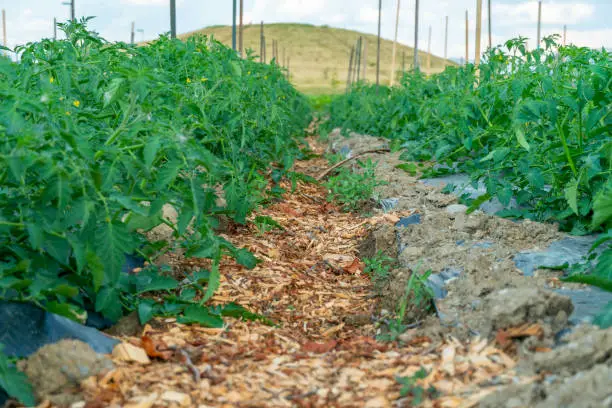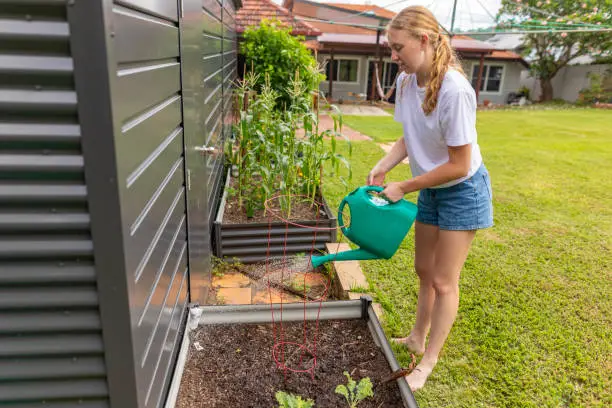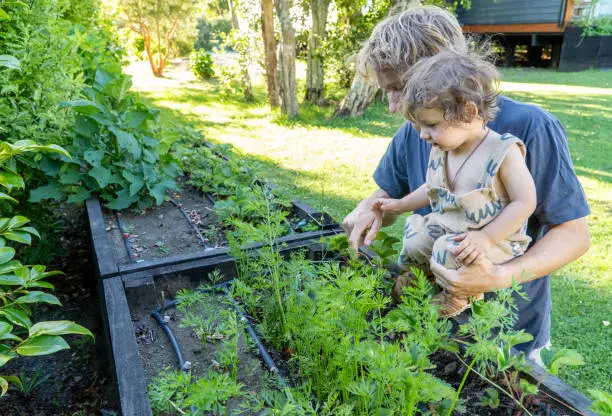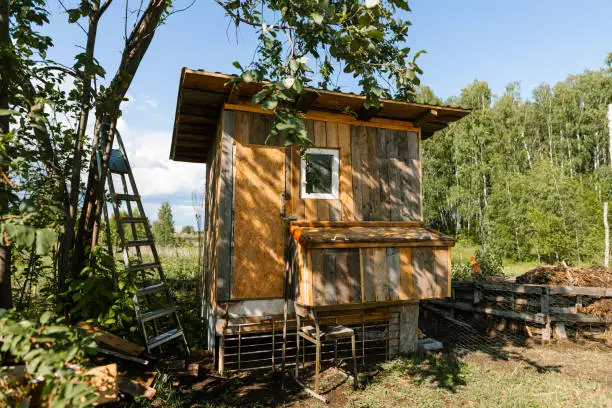Imagine turning kitchen scraps and yard garbage into “black gold.” We’re discussing compost in your backyard homesteading. You may homestead in your garden or on a balcony and recycle organic material like nature does. Go into detail about home composting.
Precisely, what is compost? Degraded organic stuff. Composting accelerates decomposition to create nutrient-rich soil. This dirt is excellent for lawns, potted plants, and gardens.
What can go in your compost bin? Fruit peels, vegetable scraps, coffee grounds, eggshells, grass clippings, leaves, and small branches. Avoid meat, dairy, fats, oils, and pet waste. These objects can attract pests and stink.
The key to composting is balancing greens (nitrogen-rich materials) with browns (carbon-rich materials). Coffee grounds and veggie leftovers are greens. Dry leaves and cardboard are brown. Try three brown to one green.
Aeration is essential. Without oxygen, your pile will stink instead of smell good. A pitchfork or shovel should be used every week or two.
You want your pile to be damp like a sponge. Too dry? Add water when turning. Too wet? Add additional browns to absorb moisture.
Temperature matters, too. The pile decomposes faster when hot. If everything is balanced—greens, browns, and air—the middle of your pile will warm up within days.

Don’t worry if things aren’t perfect immediately—learning by doing! Speaking of learning curves—my first composting attempt was a disaster! I randomly added orange peels (too acidic), plenty of grass clippings (too nitrogen), and not enough browns. I botched it all!
This is where persistence pays off: I perfected my mix after trial and error and too many YouTube lessons! The result? Rich compost that made my garden thrive like never before!
No worries if space or outdoor choices are restricted! Worm bins may work for indoor composting! Red wigglers are fast eaters that produce high-quality vermicompost (worm castings) for houseplants!
Worm bins require little upkeep. However, they should be checked for moisture levels and odors from overfeeding juicy items like melon rinds, which can cause soggy environmental conditions!
Speaking of habits, we often forget how much small changes collectively make over time towards sustainability efforts globally—even if starting simply by reducing household waste via backyard initiatives like those mentioned today, which contribute significantly to long-term overall environmental health worldwide eventually together!!
The gratification of knowing that each handful collected symbolizes direct constructive steps made locally personally to create greener future generations is priceless, immensely wonderful, and infinitely fulfilling.
Rainwater Harvesting: Create a Lush Garden
Have you ever thought, “This place could use a little more green?” in your garden? Rainwater harvesting may work. Imagine collecting rainwater instead of letting it go down the drain. Brilliant, right? Let’s explore how wet days can provide unlimited plant food.
Start by explaining why you want to capture rainwater. Though saving on water costs is nice, it’s not the only benefit. Rainwater is better for plants than tap water. It is chlorine-free H2O. As kids love candy, plants enjoy it.
How do you begin? A basic system setup doesn’t require a rocket scientist. A basic design includes gutters, downspouts, and a water bucket or tank. Let’s spice it up.
You may screen gutters to keep leaves and debris out. Nobody wants mud in their rainwater container! Some install first-flush diverters to discard rainwater. This removes roof contaminants before they enter your storage system.
Where should you put this fantastic device? Location matters. Your barrel will catch the most runoff under a downspout. It should be higher so gravity can aid water flow when you use it.
How do you transport liquid gold from barrel to plant? A barrel bottom spigot makes filling watering cans and attaching hoses easy. Add a drip irrigation system to your rain barrel for a sophisticated touch. Imagine turning on a tap and watching every drop go where it’s needed without touching it!
Nobody enjoys mid-season breakdowns, so let’s talk maintenance. Clean your gutters and screen regularly for blockages. Scrub the inside of your tank occasionally, especially if algae grows.
Are you feeling daring? Reach beyond barrels! Underground cisterns are ideal for storing large amounts of water without taking up yard space. These thousands-gallon systems benefit extensive gardens and farms.
Of course, this game allows for originality. Remember swales? They capture and guide rainwater into your garden’s most required sections in shallow ditches. Consider nature’s technique of directing water.

Remember aesthetics, too! Rain chains are functional and beautiful downspout alternatives that channel water from the roof to the ground in intricate garden art cascades.
For people in low-rainfall areas who prefer greenery, don’t worry! Greywater systems repurpose sinks, showers, and other home wastewater for irrigation after little treatment.
I remember my neighbor Jane getting fed up with her dry roses dying every summer despite her best tap water efforts—a story many gardeners know! After hearing me praise mine at one too many backyard BBQs (sorry, Jane!), she installed her first rain barrel last spring. After six months, her garden looks like Eden owing to the gathered rainwater!
Though it may seem obvious, only drink untreated gathered rainwater if filtered or treated. Safety always comes first!
Last, building up these systems takes time and money, but seeing beautiful, thriving gardens bring joy daily is worth it!
Next time, clouds gather overhead and see opportunity rather than inconvenience passing by undetected forever. Have fun gardening!
Imagine turning kitchen and yard garbage into “black gold.” Discussing compost. Like nature, you can recycle organic debris on your balcony or garden. Composting accelerates decomposition to provide nutrient-rich soil for gardens and potted plants.
Your compost bin can hold what? Peels, scraps, coffee grounds, eggshells, grass clippings, leaves, and small branches. Avoid meat, dairy, fats, oils, and pet waste—they stink and attract pests.
Greens like veggie leftovers and browns like dry leaves should be balanced. Three parts are brown, and one part is green. Turn your pile every week or two using a pitchfork or shovel to aerate. Add water or brown as needed to keep it wet like a sponge.
Temperature matters. Balanced piles heat very fast, accelerating decomposition. My initial attempt failed, but persistence yielded rich compost that grew my plants.
For small spaces, try worm bins. Vermicompost from red wigglers is excellent for houseplants. Check moisture levels, and don’t overfeed juicy foods to avoid sogginess.
Every scoop of compost is a sustainability step. Creating a greener future is rewarding.
Gardens can thrive with rainwater harvesting. Rainwater collection saves money and gives plants chlorine-free water. Create a simple gutter, downspout, and tank system. Gutter screens and first flush diverters remove trash and first runoff.
For gravity-fed water, put your barrel under a downspout and higher. A spigot makes access more accessible, and consider drip irrigation. Regular maintenance keeps things running smoothly.
Large underground cisterns store water for enormous landscapes. Rain chains offer beauty and purpose, while swales direct precipitation.
Greywater systems irrigate low-rainfall areas with home effluent. Neighbor Jane demonstrated how to gather rainwater in her garden using a rain barrel.





Leave a Reply
You must be logged in to post a comment.